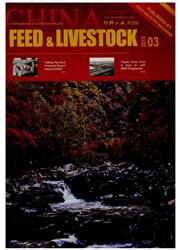

 中文摘要:
中文摘要:
收集青藏高原不同地点的13份样品,通过乳酸菌的生理生化特征结合16S rRNA基因序列分析和rec A基因分析的方法,对分离到的乳酸菌进行基因分型和菌种鉴定.结果表明,小麦样品中分离的乳酸菌被归为6个属,分别为Lactobacillus、Lactococcus、Streptococcus、Leuconostoc、Pediococcus和Enterococcus;9个种或亚种,即Lb.plantarum(0.017%)、L.garvieae(29.74%)、S.pseudopneumoniae(0.08%)、Ln.mesenteroides subsp.mesenteroides(14.08%)、Ln.lactis(0.008%)、Ln.holzapfelii(52.48%)、P.pentosaceus(3.49%)、E.gallinarum(0.003%)和E.mundtii(0.069%).无论是茎叶还是根系土壤中,都存在数量极多的大肠杆菌和好氧性细菌,大部分小麦样品中都存在数量可观的酵母菌和芽孢杆菌,少数样品中有少量梭菌属存在,而对乳酸菌的分离鉴定则表明青藏地区小麦样品附着乳酸菌类群多样,且大部分附生于小麦茎叶组织,从根系土壤中分离到的乳酸菌数量和类型相对较少.分离的乳酸菌中球型乳酸菌占绝大多数,最多的为Ln.holzapfelii.
 英文摘要:
英文摘要:
According to the colony characteristics,physiological and biochemistry characteristics combining 16 S rRNA gene sequencing analysis and rec A gene PCR amplification,lactic acid bacteria isolated from wheat in the Tibetan plateau could be identified to species or subspecies level. The results showed that lactic acid bacteria from wheat samples belonged to 6 genera,namely Lactobacillus,Lactococcus,Streptococcus,Leuconostoc,Pediococcus and Enterococcus; 9 species or subspecies,namely Lb. plantarum( 0. 017%),L. garvieae( 29. 74%),S. pseudopneumoniae( 0. 08%),Ln. mesenteroides subsp. mesenteroides( 14. 08%),Ln. lactis( 0. 008%),Ln. holzapfelii( 52. 48%),P. pentosaceus( 3. 49%),E. gallinarum( 0. 003%) and E. mundtii( 0. 069%). There were abundant Escherichia coli and aerobic bacteria in wheat samples. Most of the samples had considerable yeast and bacillus,and small amount of fusobacterium in a number of samples. Identification of lactic acid bacteria indicated that aureus accounted for the vast majority,and most were Ln. holzapfelii.
 同期刊论文项目
同期刊论文项目
 同项目期刊论文
同项目期刊论文
 Natural populations of lactic acid bacteria associated with silage fermentation as determined by phe
Natural populations of lactic acid bacteria associated with silage fermentation as determined by phe Dynamic changes of the microbial communities during the preparation of traditional Tibetan Qula chee
Dynamic changes of the microbial communities during the preparation of traditional Tibetan Qula chee 期刊信息
期刊信息
